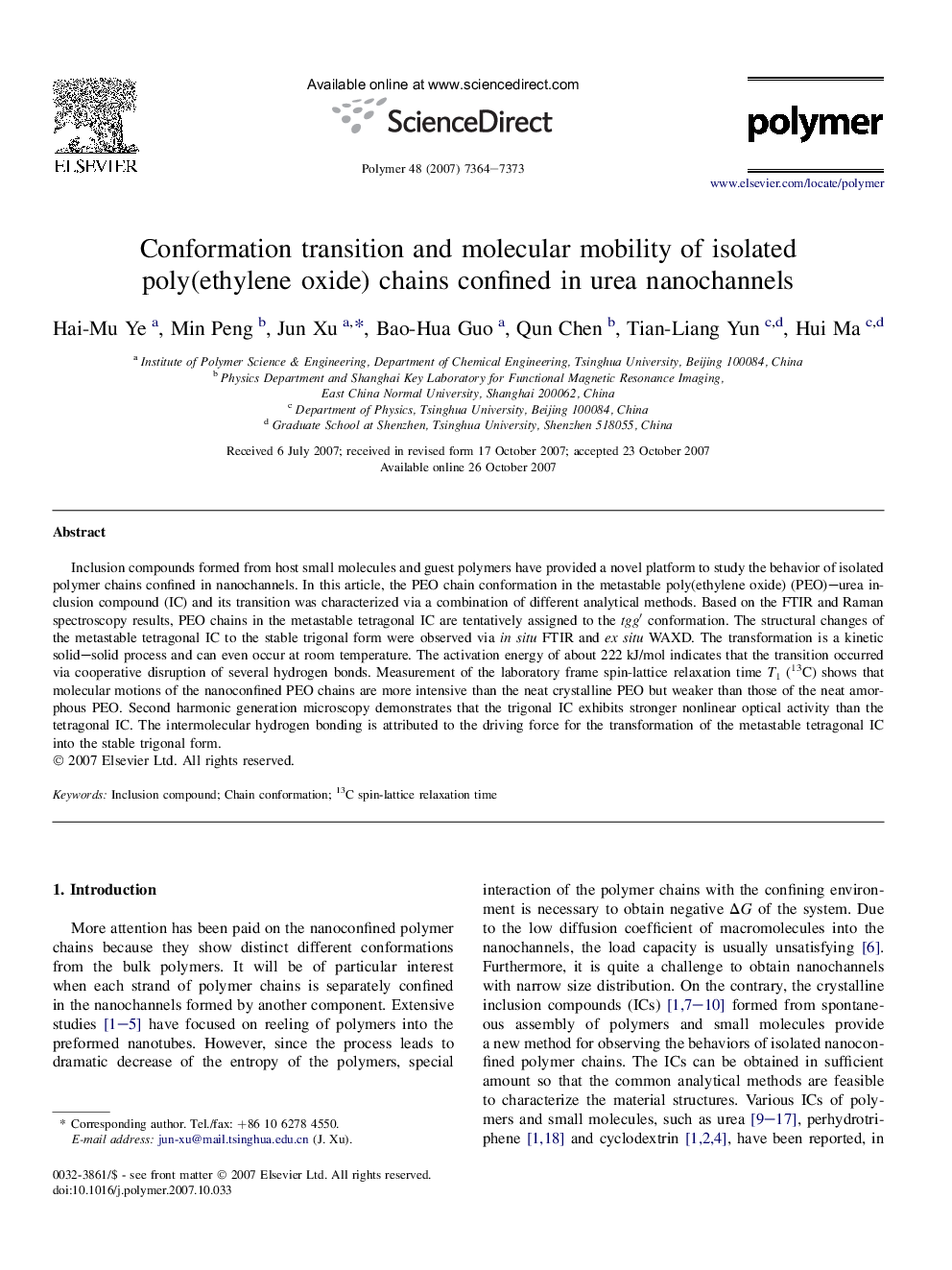| Article ID | Journal | Published Year | Pages | File Type |
|---|---|---|---|---|
| 5185703 | Polymer | 2007 | 10 Pages |
Abstract
Inclusion compounds formed from host small molecules and guest polymers have provided a novel platform to study the behavior of isolated polymer chains confined in nanochannels. In this article, the PEO chain conformation in the metastable poly(ethylene oxide) (PEO)-urea inclusion compound (IC) and its transition was characterized via a combination of different analytical methods. Based on the FTIR and Raman spectroscopy results, PEO chains in the metastable tetragonal IC are tentatively assigned to the tggⲠconformation. The structural changes of the metastable tetragonal IC to the stable trigonal form were observed via in situ FTIR and ex situ WAXD. The transformation is a kinetic solid-solid process and can even occur at room temperature. The activation energy of about 222 kJ/mol indicates that the transition occurred via cooperative disruption of several hydrogen bonds. Measurement of the laboratory frame spin-lattice relaxation time T1 (13C) shows that molecular motions of the nanoconfined PEO chains are more intensive than the neat crystalline PEO but weaker than those of the neat amorphous PEO. Second harmonic generation microscopy demonstrates that the trigonal IC exhibits stronger nonlinear optical activity than the tetragonal IC. The intermolecular hydrogen bonding is attributed to the driving force for the transformation of the metastable tetragonal IC into the stable trigonal form.
Keywords
Related Topics
Physical Sciences and Engineering
Chemistry
Organic Chemistry
Authors
Hai-Mu Ye, Min Peng, Jun Xu, Bao-Hua Guo, Qun Chen, Tian-Liang Yun, Hui Ma,
